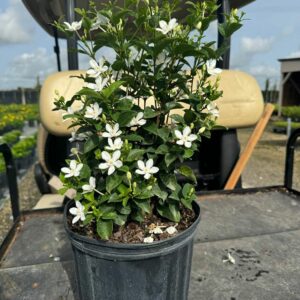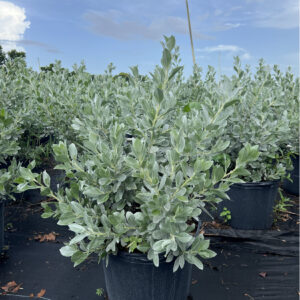Bismarck Palm
The Bismarck palm, native to Madagascar, is a striking addition to Florida landscapes with its large size, silver-blue foliage, and tolerance to warm climates. It thrives in full sun and well-draining soil, requiring regular watering and occasional fertilization for optimal growth. While relatively cold-hardy, protection from extreme cold is recommended, especially for younger palms. Regular pruning helps maintain its appearance and prevent hazards. Overall, the Bismarck palm adds tropical elegance to Florida gardens and parks.
$181.09 – $316.91
Related products
-
All Products
Asian Snow Jasmine
$24.90 This product has multiple variants. The options may be chosen on the product page -
All Products
Silver Buttonwood
$22.63 – $586.28 This product has multiple variants. The options may be chosen on the product page
Climate: Bismarck palms thrive in warm, tropical climates, making them well-suited for Florida’s climate. They prefer full sun but can tolerate partial shade. These palms are relatively cold-hardy and can withstand temperatures down to about 25°F (-4°C) once established, making them suitable for many parts of Florida.
Size: Bismarck palms are known for their large size. In optimal conditions, they can reach heights of up to 60 feet with a spread of about 25 feet. However, it’s essential to consider the available space when planting them, as they require ample room to grow and spread out.
Color: One of the most striking features of Bismarck palms is their silver-blue foliage. The large, fan-shaped leaves have a powdery coating that gives them their distinctive color. This coloration is more pronounced in younger palms and can fade slightly as the tree matures.
Care: Proper care is essential for the health and vitality of Bismarck palms. Here are some care tips:
Watering: While Bismarck palms are drought-tolerant once established, they benefit from regular watering, especially during dry periods. However, they are susceptible to root rot if the soil remains waterlogged, so ensure proper drainage.
Soil: Well-draining soil is crucial for Bismarck palms. They prefer slightly acidic to neutral soil types.
Fertilization: Apply a balanced fertilizer formulated for palm trees in spring and summer to promote healthy growth. Avoid fertilizing in late fall and winter.
Pruning: Remove dead or damaged fronds regularly to maintain the palm’s appearance and prevent potential hazards.
Protection from cold: While Bismarck palms can tolerate brief periods of cold weather, providing protection during extreme cold snaps, especially for younger palms, can help prevent damage.
Overall, Bismarck palms can make a stunning addition to the landscape in Florida, adding a touch of tropical elegance with their distinctive color and impressive size.
| Size | 25 Gallon, 7 Gallon, 15 Gallon |
|---|



